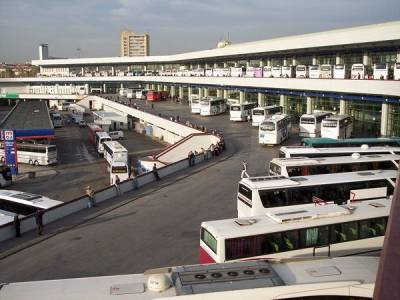America's most litigated patent, revisited
So what is Americas' most litigated patent? Is it something to do with smartphones, maybe the famous 364 page Steve Jobs patent, being asserted against big smartphone companies around the world? Or maybe something to do with Viagra, being asserted against big pharma?
Or is it a predictor of the arrival time of buses or parcels, being asserted against public transport authorities and small companies across America?
Sadly perhaps, it is the latter, being US patent 6415207. A company called Shipping and Transit. RPX has this patent being asserted by a company called Shipping and Transit against 114 defendants in 98 cases for this one patent alone, while more than 500 lawsuits have been filed for related patents.
Claim 1 of this patent reads:
1. A system for monitoring and reporting status of vehicles, comprising:
a database storing status information associated with a vehicle, said status information indicative of a current proximity of said identified vehicle;
a communication interface configured to communicate with communication devices remotely located from said system; and
a system manager configured to receive a message transmitted from said vehicle and to update said status information based on said message, said system manager further configured to analyze caller identification information automatically transmitted to said communication interface when a remote communication device establishes communication with said communication interface, said system manager further configured to automatically search for and locate a set of said status information based on said caller identification information, said system manager further configured to retrieve said set of status information and to transmit said retrieved set of status information to said remote communication device.
Which can be simplified to a means of letting remote parties know when a vehicle such as a bus might arrive.
Ambercite has earlier looked for prior art forthis patent this before using our earlier tool AmberScope, but this patent is back in the news as Unified Patents, which appears to be a mutual defense league for big companies, has challenged this patent.
What can Cluster Searching tell us about undiscovered prior art?
When we last looked at this patent, we only had access to our tool AmberScope. So what can our latest tool Cluster Searching tell us? What is the best prior art that could be asserted against this patent?
As discussed in a recent blog, there are many search strategies you can use in Cluster Searching. But in this search, we are going to go for the easiest search strategy. the "Simple Patent Number Search" - where we simply put in the number of the patent that is the subject of an invalidation search, along with a suitable date filter, being March 2000 in this case:
The resulting query looks like this:
Cluster Searching uses advanced algorithms to identify the most similar patents, whether a known citation, or an 'unknown' citation not previously cited. Unknown prior art can be particularly useful for patent invalidation as it can be used as the basis for reexamination in front of the patent office.
Perhaps not surprisingly, the most similar patents turned out to be family members filed by the same company, with a snapshot of these results shown below:
However Cluster Searching includes the ability to filter out nominated owners:
When we apply this filter, a very different set of results is shown (this only shows the six most similar, but there are many more):
Of note, of these top five patents 3 have not previously been cited. The first on the list is also a family member for the Shipping and Transit patent, but none of the rest are. These include:
US4799162, filed for a Route bus service controlling system by Mitsubishi in 1985, and which discloses a bus tracking and notification system.
US4651157, filed for a Security monitoring and tracking system in 1985, and which discloses a means of monitoring and reporting the location of vehicles such as planes, boats and trucks.
And there are other uncited patents, further down the list, that are also relevant.
And round two?
One of the great things about Cluster Searching is that it can be used in an iterative fashion - we can expand the search query with relevant patents that we find. This could, for example, led to the query here which combines the Shipping and Transit patents with the two that we found:
Subscribers to Cluster Searching can test this for themselves.
What does this case study tell us about the value proposition of Cluster Searching?
One of the key value propositions of Cluster Searching is that it can find patents missed by conventional searching. In this particular case, the Shipping and Transit patent had 59 prior art citations. We can presume that these were the result of a diligent search by the patent examiner in question, and the IDS statement by the applicant.
Yet Cluster Searching was able to find these other relevant patents. This is not a criticism of the examiners, but merely a reminder that different search processes can find different patents - that are still relevant. This is why we recommend that searchers use Cluster Searching to provide a second opinion to every search they do - they might be surprised what they find, and have greater confidence in the results they deliver to their internal and external clients.
Want to try this on your own problem patents?
Please contact us and request a demonstration and free trial. Hopefully the example above has shown you just how easy Cluster Searchingcan be to use, and how relevant the hits can be.







